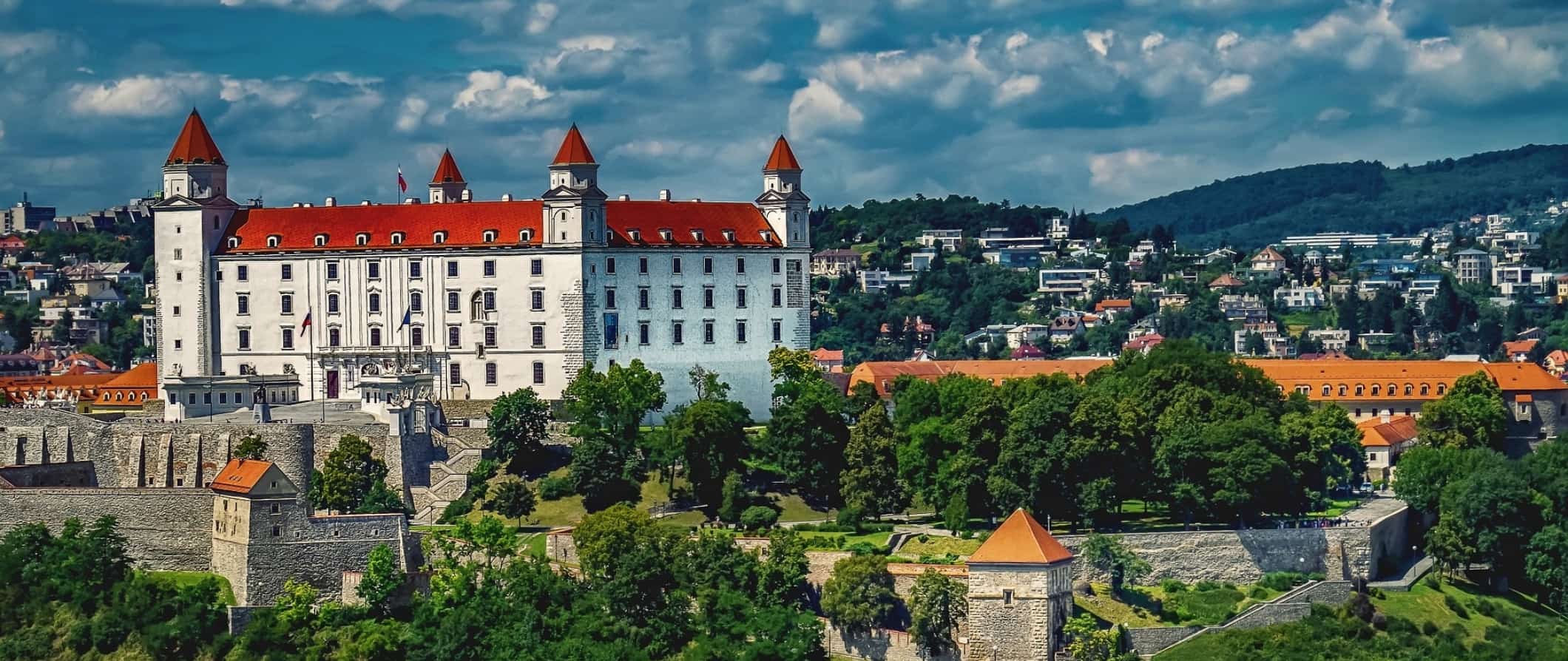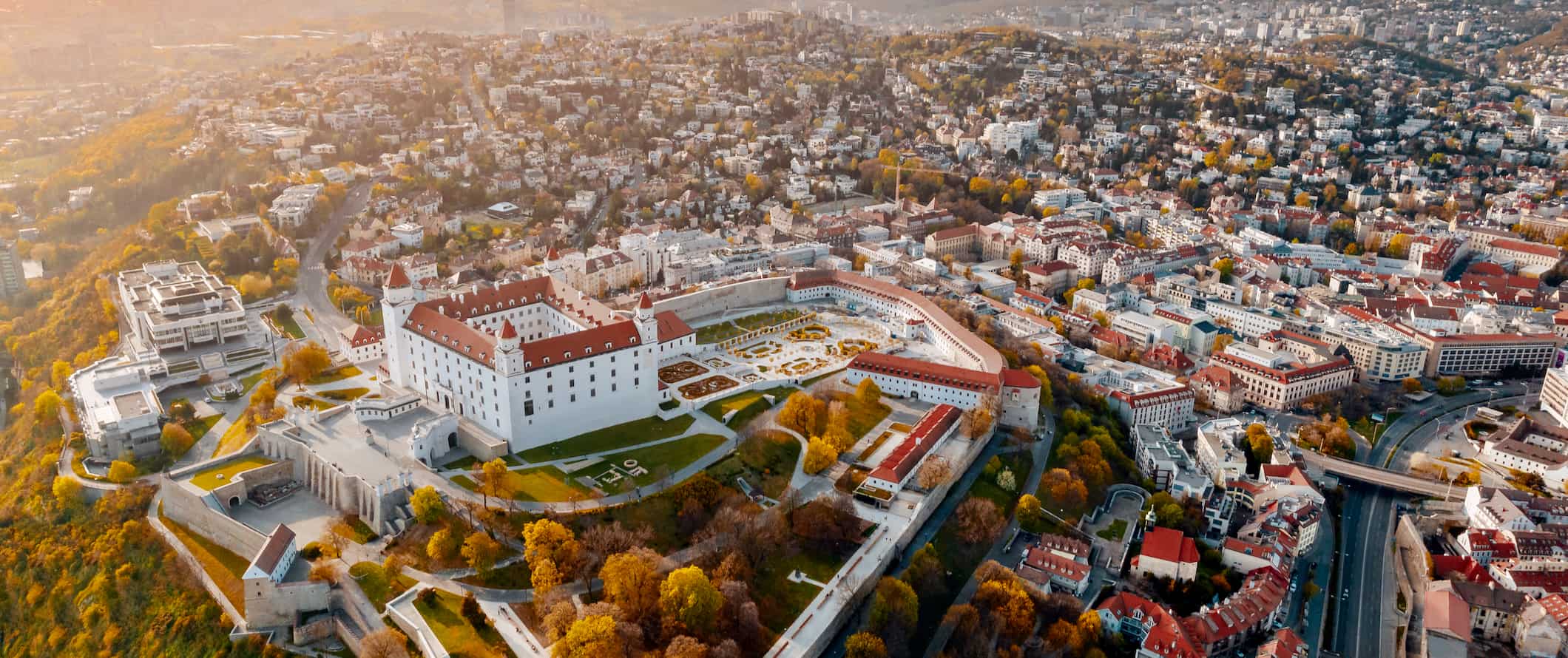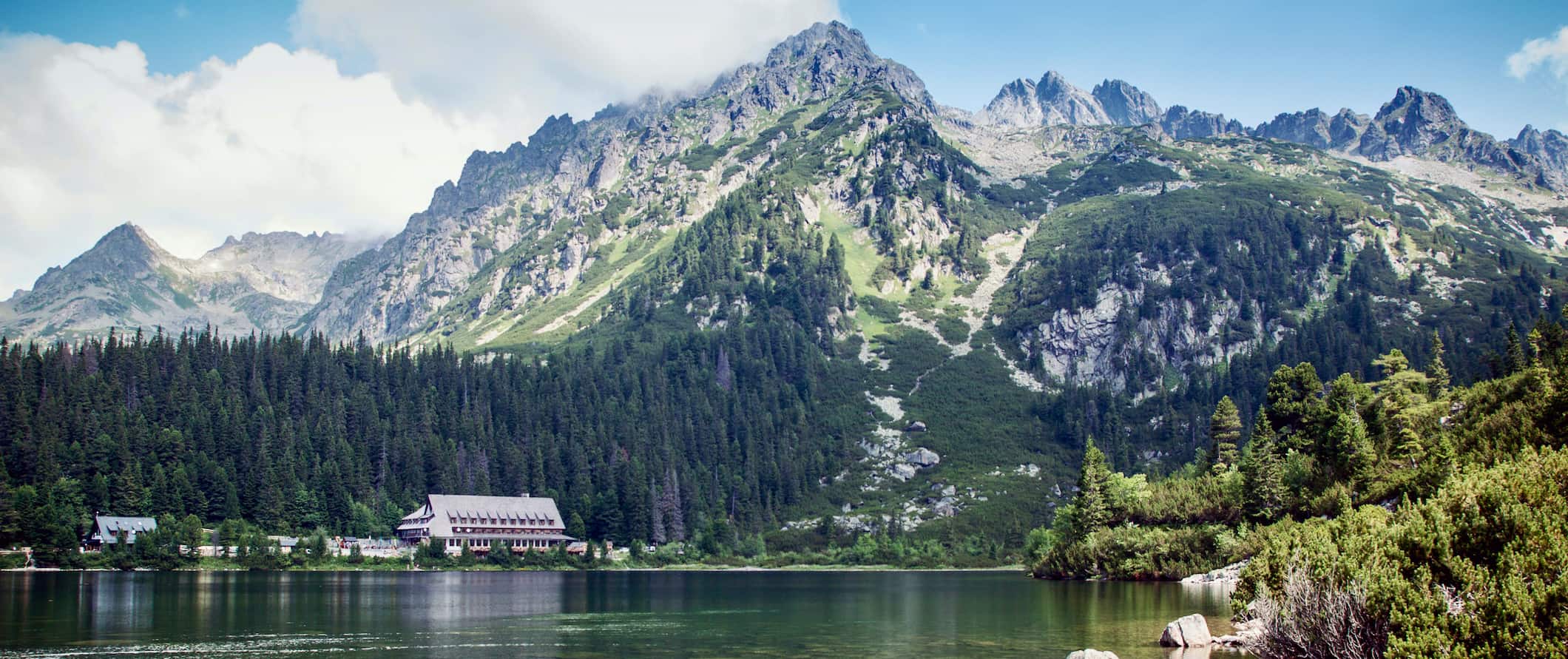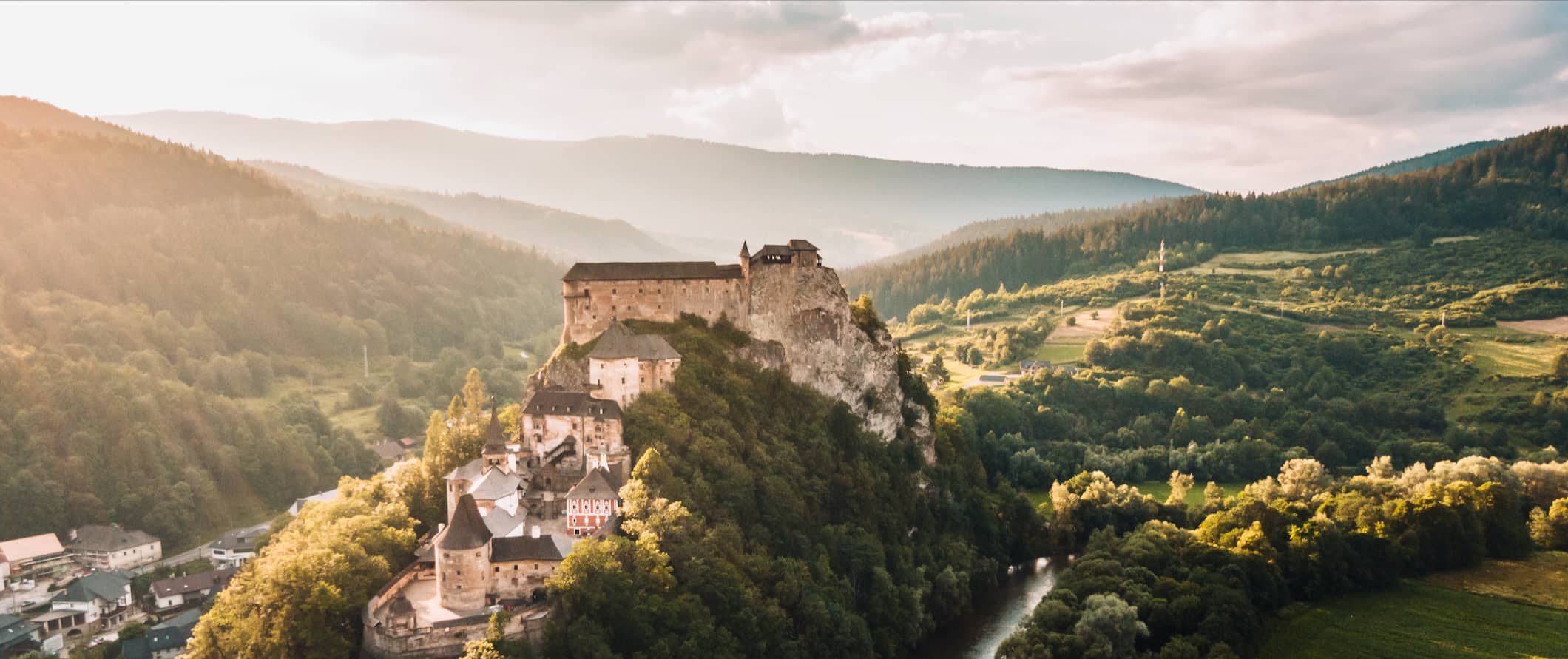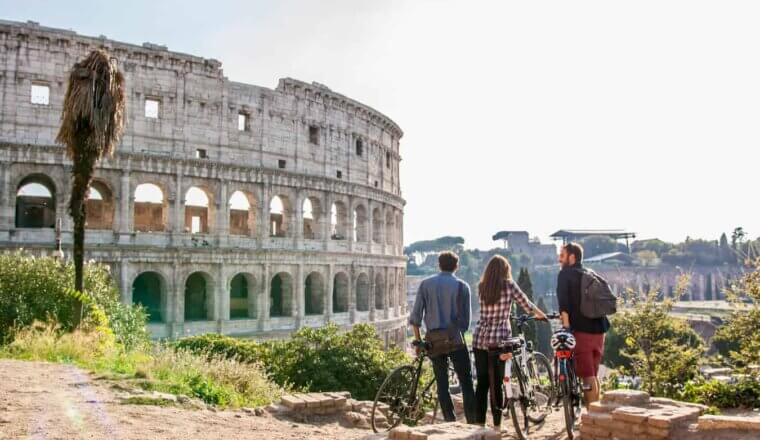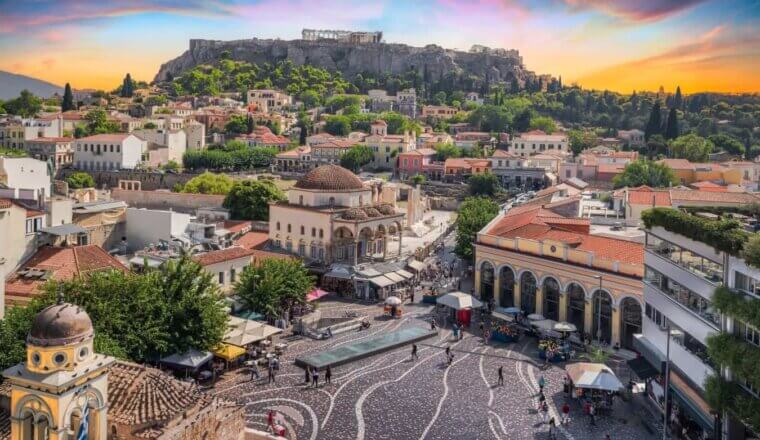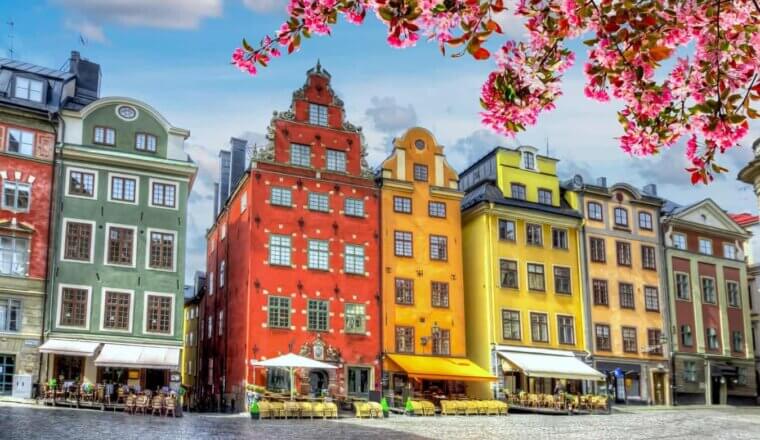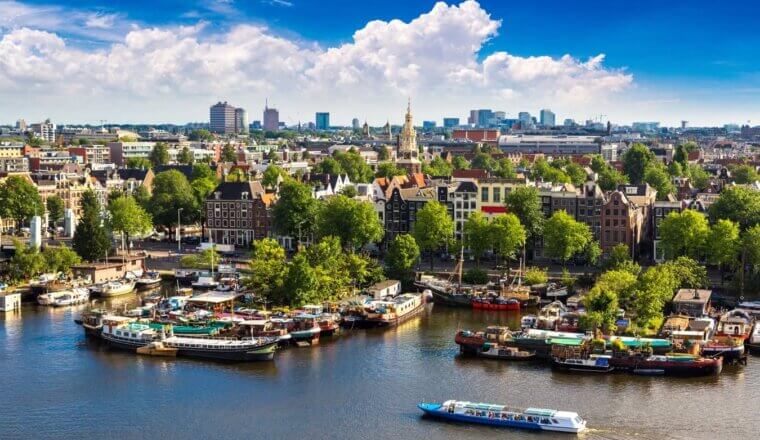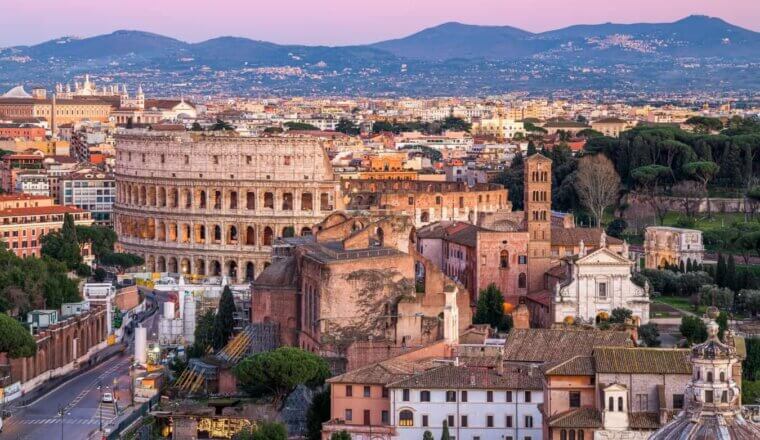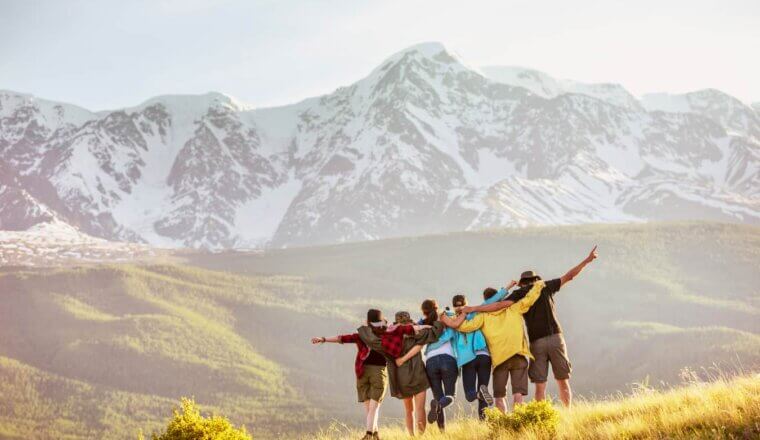Slovakia is a Central European country known for its dramatic mountainous landscapes, medieval history, and stunning architecture. As a land-locked country, it’s been part of numerous empires and governments throughout its history, all of which have left their own unique influence on the region.
I’ve visited Slovakia several times over the years and I’m always amazed at how much is packed into such a small country (as well as how few people visit beyond the capital). While Bratislava gets plenty of attention, the country as a whole sees a fraction of the crowds compared to its neighbors.
But their loss is your gain!
Slovakia is filled with beautiful rivers, lakes, national parks, tiny towns, and castle ruins. And compared to its neighbors it’s also quite affordable. It’s the perfect place to hike, road trip, and escape Europe’s summer crowds — all while on a budget!
This travel guide to Slovakia can help you save money, plan your visit, and make the most of your trip to this underrated gem!
Table of Contents
Top 5 Things to See and Do in Slovakia
1. Explore Bratislava
Bratislava is Slovakia’s capital and largest city. Bordering both Austria and Hungary, its position on the banks of the Danube make it an obvious point of entry for most travelers. Don’t miss the city’s Old Town and Bratislava Castle. There’s also an eclectic music scene here.
2. Visit Košice
Košice is the second-largest city in Slovakia, dating back to the 13th century. The city center encompasses the historic part of town and has the largest number of historical monuments in the country. Be sure to visit the 13th-century St. Elisabeth Cathedral.
3. See Banská Štiavnica
This well-preserved UNESCO medieval town sits in a valley formed after an ancient volcano collapsed. Be sure to visit the open-air mining museum, where you can walk more than a kilometer underground (10 EUR, an additional 15 EUR for a tour in English).
4. Hike Slovak Paradise National Park
Slovak Paradise National Park boasts over 100 kilometers (62-miles) of hiking trails, passing through canyons, meadows, and more waterfalls than you can count. The hiking isn’t difficult, but you must navigate narrow passages, climb steep ladders, and use chains above ravines.
5. Take a wine tour
Not far from Bratislava lies Modra, which is the place to go for wine tours and tastings. Look out for the annual Modra Wine Cellars Day, when many of the wine cellars in the area organize a day-long tasting for visitors. Expect to pay at least 40 EUR for a tour.
Other Things to See and Do in Slovakia
1. Visit the Slovak Karst Caves
There are almost 2,500 caves in Slovakia — and only 400 of them have been explored. In the southern Slovak Karst region, there are plenty of options but if you want a truly unique experience, visit a section of Domica Cave where you can take an underground boat ride on the River Styx (trip to Hades not included). Admission including the boat ride is 9 EUR. Other caves worth checking out are Dobšinská Ice Cave, Harmanecka, and Gombasecka.
2. Go rock climbing
Head to the mountains around Terchová in the north or Slovenský Raj in the east for some world-class rock climbing. You’ll find beautiful gorges that you can climb for free thanks to the ropes and ladders already in place. If you’re new to rock climbing and would rather do a guided trip, expect to pay around 80 EUR per person.
3. Run the oldest marathon in Europe
The Košice Peace Marathon is the oldest marathon in Europe (and the second oldest marathon in the world). Held in Košice each year since 1924, the city is completely overtaken by the event as thousands come to take part, watch, and celebrate. The marathon happens on the first Sunday in October. If you want to run the race yourself, registration is 37 EUR. Be sure to book your accommodation far in advance as the entire city fills up.
4. Relax in a thermal cave bath
For a uniquely Slovakian experience, visit the Parenica cave bath at the Sklené Teplice spa. Located in Central Slovakia, these natural hot springs have been in use for centuries. The water is a constant 42°C (107°F) and is perfect for relaxing (especially if you’re visiting in the winter). Bath visits last 20 minutes and are included in your stay at the spa, which costs around 70 EUR per night.
5. Tour the Nedbalka Gallery
The Nedbalka Gallery in Bratislava has a spectacular award-winning design that resembles the Guggenheim Museum in New York City and is a stark contrast to the more traditional medieval buildings that make up the city’s Old Town. The gallery, which was heavily remodeled in 2012, spans five floors and is home to over 1,000 works depicting Slovak culture. Admission is 5 EUR and includes a coffee or tea at the gallery’s café.
6. Hike the smallest alpine mountain range in Europe
The most famous national park in Slovakia, High Tatras is located in the north of the country along the border with Poland. Stretching 53 kilometers (33 miles), it’s the smallest alpine mountain range in Europe. If you want to reach the peak of the High Tatras, Gerlachovsky Stit, you need to hire a mountain guide as the ascent is extremely challenging and not to be attempted alone. If you don’t want to hike (or want an easier option), Lomnicky Stit is slightly lower and far more accessible thanks to the cable car to the top. During the winter, there are several ski resorts here. Round-trip cable car tickets are expensive at 59 EUR, however, you can hike up part way and then take the cable car for half price.
7. Explore an ice cave
One of the most popular caves in the country is Dobšinská, an ice cave located near Dobšiná in Central Slovakia. Discovered in 1870, the caves are a UNESCO World Heritage Site and the first caves in Europe to be lit by electricity. The cave spans over 1,500 acres and is full of all kinds of stunning natural ice formations. Admission is 9 EUR for a 30-minute visit.
8. Visit the Old Market Hall (Stará tržnica)
Each Saturday between 9am-3pm the Old Market Hall in Bratislava hosts its weekly market where you can buy food and goods from regional farmers and producers. There’s also a children’s theater performance and book fair every Saturday. The current building dates to 1910, however, there were medieval fortifications here dating back to the 16th century. In addition to foods and produce, the market also hosts cultural events, music performances, two cafes, a brewery, and a cooking school. The Old Market Hall also hosts an annual beer festival (called Salón Piva) where you can sample the locally produced beer.
9. Go hiking
Slovakia is one of the best countries in Europe for hiking. There are hundreds of trails, including dozens of long-distance routes as well as easy, moderate, and challenging day hikes. Some hikes to check out are Rysy Mountain, near the border of Poland (20km, 10 hours); Kriván, considered Slovakia’s most beautiful mountain (6km, 4 hours); and Popradske Pleso, a picturesque alpine hike (4km, 2 hours). If you’re going hiking in the mountains, be sure to check the weather in advance as conditions can change rapidly. Always make sure you have the proper gear and plenty of water too.
10. Hit the slopes
The Tatra mountain range rivals the Alps when it comes to beauty. However, when it comes to skiing, there are fewer skiers and cheaper prices in Slovakia (lift tickets are upwards of 75% cheaper than in neighboring Austria). Some ski resorts to visit are Jasná Nízke Tatry (Liptovský Mikuláš), Relax Center Plejsy (Krompachy), Tale (Bystra), and Malinô Brdo (Ružomberok). Expect to pay around 49 EUR for a lift pass, however, you can find passes for as little as 8-16 EUR in places like Moštenica, Zliechov, and Skorušina.
Slovakia Travel Costs
Accommodation – Hostel dorms are the cheapest option in Slovakia. A bed in a 6-8-bed dorm costs 13-17 EUR per night, while 10-15-bed dorms are 9-11 EUR. Free Wi-Fi is standard and most have kitchens. For a private room, expect to pay around 33-38 EUR per night.
Outside of Bratislava, budget hotel rooms start around 25-40 EUR per night. In Bratislava, expect to pay closer to double that.
Airbnb is a budget-friendly option available around the country with private rooms starting at 25 EUR per night. For an entire home or apartment, expect to pay at least 50 EUR per night.
For anyone traveling with a tent, camping is available around the country. Wild camping is legal but be sure to double-check as it is illegal in certain protected areas (no camping in the High Tatras or national parks, for example). You’re also not allowed to camp in forested areas and should use caution when lighting fires as this is generally prohibited. Official campgrounds are scattered around the country with basic plots for two without electricity costing 14-16 EUR per night.
Food – Slovakian cuisine is based on three main staples: pork, cabbage, and potatoes (much like many of its neighbors). Polish and Hungarian influences abound, so expect lots of soups, sauerkraut, breaded meats, and dumplings. Lunch is the main meal of the day, with soup being the most common main course. A popular local delicacy is jaternica, a blood sausage made with pig’s blood and buckwheat. Halušky (soft ptato dumplings) and schnitzel are two other popular traditional choices.
For an inexpensive meal of traditional cuisine, expect to pay around 7-12 EUR. Fast food (think McDonald’s) costs 5-7 EUR for a combo meal. Thai and Indian food can be found in a couple of the larger cities in the country, costing 8-13 EUR for a main dish.
If you want to splash out, a three-course meal of traditional cuisine costs around 20 EUR, including a drink.
Expect to pay between 1.50-2.50 EUR for a beer and about the same for a latte or cappuccino (if you buy beer at the grocery store it’s just 1-1.50 EUR). A glass of wine generally costs around 2.50-4 EUR.
If you are planning to cook your own food, a week’s worth of groceries costs around 20-35 EUR for basic staples like pasta, rice, seasonal produce, and some meat. A medium-sized bag of pasta is less than 1 EUR, fresh buns (like croissants) are around .50 EUR while a loaf of bread is around 2 EUR. Cereal is around 1.50 EUR while a large bag of potato chips is 1.50-2 EUR.
If you’re vegan or vegetarian, Bratislava has tons of options. Beyond the large supermarkets (which have things like soy meat and alternative kinds of milk), there are a handful of vegan and vegan-friendly restaurants around the city, including Šmak (vegan sushi), Vegan Kiosk (vegan burgers and wraps), and La Donuteria (vegan and non-vegan donuts).
Other suggested places to eat in Bratislava include U Sedliaka (traditional Slovakian food), Mezcalli (Mexican food), and Next Apache (a small cafe that sells used books).
Backpacking Slovakia Suggested Budgets
If you are backpacking Slovakia, my suggested budget is 45 EUR per day. This assumes you’re staying in a hostel dorm, cooking all of your meals, doing free activities like walking tours and hiking, limiting your drinking, visiting some cheap attractions like museums or galleries, and using public transportation to get around.
On a mid-range budget of 105 EUR per day, you can stay in a private Airbnb apartment, eat out for most of your meals at budget-friendly restaurants serving traditional cuisine, go out for some drinks, take some guided tours, visit more paid attractions like the caves, and take the occasional taxi to get around.
On a “luxury” budget of 200 EUR, you can stay in a hotel, eat out at any restaurant you want, rent a car, drink as much as you want, and see as many castles and museums as you can handle! This is just the ground floor for luxury though. The sky is the limit!
Slovakia Travel Guide: Money-Saving Tips
Slovakia is one of the cheaper Central European countries and it’s easy here to travel on a budget. That said, if you’re looking for ways to trim your expenses, here are my favorite ways to save money in the country:
- Take a free walking tour – Bratislava offers a handful of free walking tours which are a great way to get familiar with the city and its culture on a budget. Be Free Tours is the most popular tour company. Just be sure to tip your guide at the end!
- Ride Flixbus – Flixbus is a budget-friendly way to get around the country (as well as the region). They have Wi-Fi, electrical outlets, and decent enough seats for overnight and long-haul bus journeys.
- Cook your own meals – Book accommodation with a kitchen so you can cook your own meals. Buying your own groceries may not be as glamorous as going out to eat, but it does save money.
- Get outdoors – The easiest way to keep active and save money is to get outdoors and explore Slovakia’s national parks. Most don’t charge an entry fee. Nature fills your days and avoids slimming your wallet!
- Wild camp – If you really want to save money in Slovakia, bring your tent as wild camping is legal. You can pitch your tent on almost all public land throughout Slovakia. Just avoid national parks and forests.
- Stay with a local – Staying with a local via Couchsurfing is a great way to not only save money, but you’ll also connect with a knowledgeable local who can help you better understand the country and its people.
- Bring a reusable water bottle – The tap water in Slovakia is safe so bring a reusable water bottle to avoid single-use plastic. A filtered bottle like LifeStraw ensures your water is safe and clean. It’s perfect for anyone planning to hike or explore the country’s national parks.
Where to Stay in Slovakia
The hostel scene in Slovakia does not disappoint. Most have reliable Wi-Fi, kitchens, and are clean and modern. Here are some of my favorite places to stay in Slovakia:
- Hostel Folks (Bratislava)
- Wild Elephants Hostel (Bratislava)
- The Ginger Monkey (High Tatras)
- Happy Bull (Kosice)
- Nitra Glycerin Hostel (Nitra)
How to Get Around Slovakia
Public transportation – For public transportation around cities, the fare is generally proportional to the duration of the journey. For example, in Bratislava, a 30-minute ride costs 0.90 EUR while a 60-minute ride costs 1.20 EUR. Day passes are available in most of the cities for around 4.50 EUR.
Bus – Flixbus is the most budget-friendly option to explore the country. The bus from Bratislava to Košice costs 22 EUR for the 6.5-hour journey. For Bratislava to Budapest, Hungary, the 2.5-hour bus ride ranges from 12-26 EUR while the one-hour trip from Bratislava to Vienna, Austria can be done for 9 EUR.
Trains – Trains are more expensive than buses and don’t reach as many destinations in the country. However, they’re a lot quicker. Bratislava to Poprad takes around 4 hours and costs 15 EUR. The 5.5-hour journey to Košice costs 18 EUR. The 2.5-hour trip to Budapest, Hungary costs 10 EUR while the 90-minute ride to Vienna, Austria costs 5 EUR.
Budget Airlines – There are no domestic flights around Slovakia.
Car Rental – Car rentals can be as low as 25 EUR per day for a multi-day rental. You need an International Driver’s Permit (IDP) to rent a vehicle.
Hitchhiking – Hitchhiking in Slovakia is pretty safe and you can usually pick up a ride quickly. Many younger Slovakians speak English. HitchWiki is the best website for up-to-date hitchhiking tips and info.
When to Go to Slovakia
Slovakia has four distinct seasons. The summers are sunny and hot and see the biggest influx of visitors. July-August is the most popular time to visit, with daily highs around 27°C (81°F).
During the shoulder seasons, you avoid both the heat and the crowds. The best months to visit are between May-June or September-October, especially if you’re hiking. There are cooler temperatures and, in the fall, you get to see the leaves change. Expect temperatures around 20°C (68°F).
Winter is cold and snowy with temperatures dropping below freezing so I’d only visit if you plan on doing some winter sports, such as skiing.
How to Stay Safe in Slovakia
Slovakia is a very safe country to visit; it’s the 19th safest country in the world. Violent crime against tourists is virtually nonexistent. Pickpocketing can occur, however, especially in high-traffic areas such as Bratislava’s Old Town. Keep your valuables safely tucked away when in public just to be safe.
Solo female travelers should feel safe here, though the standard precautions apply (never leave your drink unattended at the bar, never walk home alone intoxicated, etc.).
If someone strikes up a conversation with you trying to sell something or if young children approach you, be on alert — their friend may be reaching for your wallet while you’re distracted.
If you’re worried about getting scammed, read this post on common travel scams to avoid.
If you rent a car, don’t leave any valuables in it while you’re hiking or overnight. Break-ins are rare but it’s better to be safe than sorry.
If you’re hiking here (especially doing alpine hiking in the mountains), make sure you let your hostel/hotel staff know just in case. Always bring a first aid kit as well as basic gear like a flashlight, raincoat, and extra food just in case.
If you experience an emergency, dial 158 for assistance.
Always trust your gut instinct. Make copies of your personal documents, including your passport and ID. Forward your itinerary along to loved ones so they know where you are.
The most important piece of advice I can offer is to purchase good travel insurance. Travel insurance will protect you against illness, injury, theft, and cancellations. It’s comprehensive protection in case anything goes wrong. I never go on a trip without it as I’ve had to use it many times in the past. You can use the widget below to find the policy right for you:
Slovakia Travel Guide: The Best Booking Resources
These are my favorite companies to use when I travel. They consistently have the best deals, offer world-class customer service and great value, and overall, are better than their competitors. They are the companies I use the most and are always the starting point in my search for travel deals.
- Skyscanner – Skyscanner is my favorite flight search engine. They search small websites and budget airlines that larger search sites tend to miss. They are hands down the number one place to start.
- Hostelworld – This is the best hostel accommodation site out there with the largest inventory, best search interface, and widest availability.
- Booking.com – The best all around booking site that constantly provides the cheapest and lowest rates. They have the widest selection of budget accommodation. In all my tests, they’ve always had the cheapest rates out of all the booking websites.
- Get Your Guide – Get Your Guide is a huge online marketplace for tours and excursions. They have tons of tour options available in cities all around the world, including everything from cooking classes, walking tours, street art lessons, and more!
- SafetyWing – Safety Wing offers convenient and affordable plans tailored to digital nomads and long-term travelers. They have cheap monthly plans, great customer service, and an easy-to-use claims process that makes it perfect for those on the road.
- LifeStraw – My go-to company for reusable water bottles with built-in filters so you can ensure your drinking water is always clean and safe.
- Unbound Merino – They make lightweight, durable, easy-to-clean travel clothing.
- Top Travel Credit Cards – Points are the best way to cut down travel expenses. Here’s my favorite point earning credit cards so you can get free travel!
- BlaBlaCar – BlaBlaCar is a ridesharing website that lets you share rides with vetted local drivers by pitching in for gas. You simply request a seat, they approve, and off you go! It’s a cheaper and more interesting way to travel than by bus or train!
Slovakia Travel Guide: Related Articles
Want more info? Check out all the articles I’ve written on backpacking/traveling Europe and continue planning your trip:
